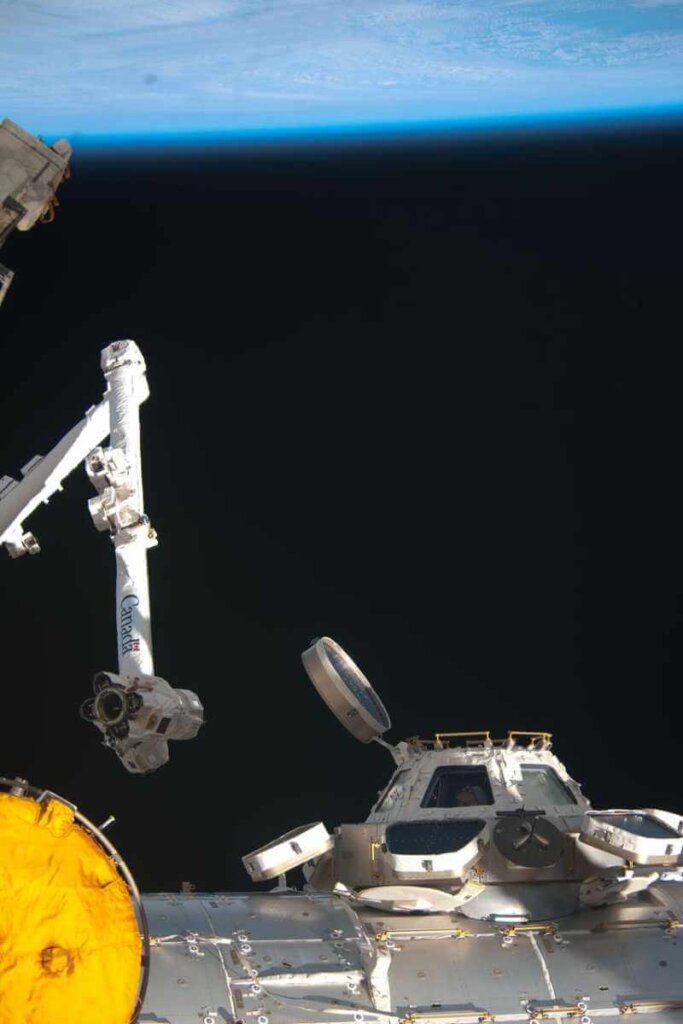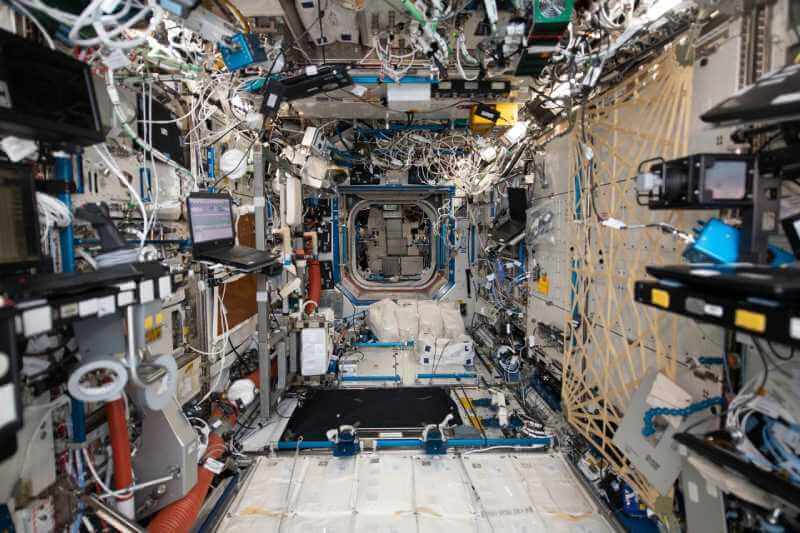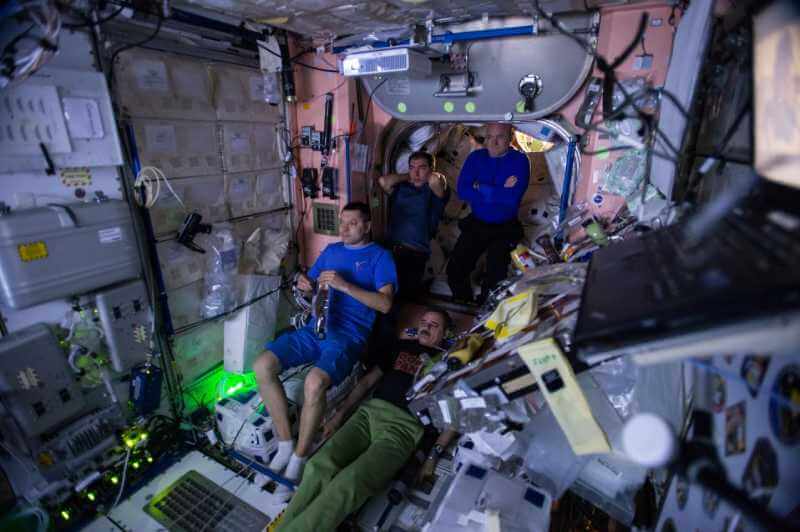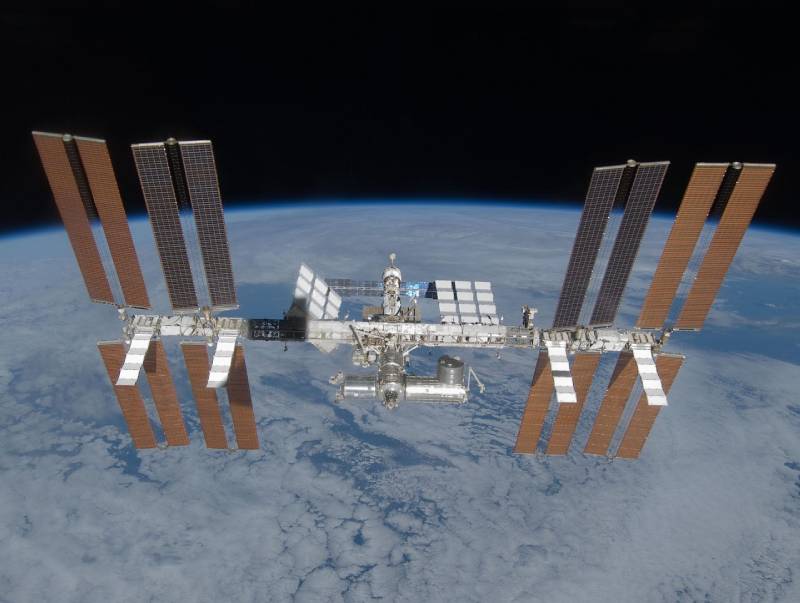Have you ever looked at the night sky and thought, “How big is the international space station”? As one of humanity’s most impressive achievements, the ISS symbolizes international cooperation and cutting-edge research. In this article, we’ll explore the size of the International Space Station and give you a comprehensive overview of this floating marvel.
The Size of the International Space Station
The ISS is an incredible feat of engineering and international cooperation, and its size is just one part of what makes it so impressive. While the station is about as long as a football field and weighs nearly 925,000 pounds, the living space inside is relatively cozy. With 13,696 cubic feet (388 cubic meters) of habitable space, the ISS provides astronauts and cosmonauts with a comfortable area roughly equivalent to a six-bedroom house. Can you imagine living in a house that’s orbiting Earth at an altitude of about 250 miles (400 km)?
Speaking of living in space, the ISS is designed to accommodate a crew of six astronauts for long-term stays. The living quarters are divided into different modules, each serving a specific purpose. For instance, there are sleeping quarters (also known as crew cabins) for each astronaut, a kitchen (galley) for meal preparation, and a bathroom (Waste and Hygiene Compartment) that has been specially designed for use in microgravity.
One of the most awe-inspiring parts of life on the ISS is the Cupola, a dome-shaped module with large windows that offer a panoramic view of Earth and the cosmos. Astronauts can gaze at the beautiful planet they call home and observe the stars and other celestial bodies. The Cupola also serves as a critical vantage point for conducting scientific research and operating the robotic arm known as Canadarm2.

The solar arrays are another significant component of the ISS, spanning approximately 240 feet (73 meters) wide. These arrays are crucial for providing the station with electrical power. They capture sunlight and convert it into electricity, which is then used to power the various systems on board, such as life support and scientific equipment. As a result, the ISS is a self-sustaining environment, allowing astronauts to live and work in space for extended periods.
International Space Station Modules
These modules serve various purposes, from scientific research to living quarters, and they’re essential for the smooth operation of the ISS.
Zarya (Functional Cargo Block)
Let’s start with Zarya, also known as the Functional Cargo Block. This was the first module launched into space for the ISS in 1998. It’s primarily responsible for providing the station power, propulsion, and communication support. Zarya also serves as a fuel, water, and other supplies storage area.
The Unity Node
Also known as Node 1, this central connecting module is crucial in linking the ISS’s American and Russian segments. It’s like a hub allowing different station parts to work together seamlessly. The Unity Node measures around 18 feet (5.5 meters) long and 14.5 feet (4.4 meters) in diameter, providing a compact but essential space for maintaining the functionality of the ISS.
The Destiny Laboratory

Moving on to the Destiny Laboratory, this module is the heart of U.S. scientific research aboard the ISS. With its 28 feet (8.5 meters) length and 14 feet (4.3 meters) diameter, the Destiny Laboratory offers a spacious environment for astronauts to conduct various experiments that help us better understand life in space and the universe around us.
The Russian Orbital Segment
Let’s not forget the Russian Orbital Segment, which forms the core of the Russian portion of the ISS. It has living quarters, life support systems, and Russian Soyuz and Progress spacecraft docking ports. This segment is approximately 111 feet (34 meters) long with a diameter of 13.5 feet (4.1 meters), which is vital to the ISS’s overall functionality.
The European Columbus Module
The Columbus Module is another fantastic addition to the ISS, courtesy of the European Space Agency. Their primary laboratory aboard the station spans about 23 feet (7 meters) in length and 14.7 feet (4.5 meters) in diameter. The Columbus Module houses a range of scientific experiments and research equipment, further expanding our knowledge of space and its mysteries.
The Japanese Experiment Module
Last, we have the Japanese Experiment Module, also known as Kibo. This module is Japan’s primary contribution to the ISS and is the largest laboratory on the station. With dimensions of approximately 36.7 feet (11.2 meters) in length and 14.4 feet (4.4 meters) in diameter, Kibo provides ample space for cutting-edge experiments and research that benefit humanity both in space and back on Earth.
The Crew and Their Living Conditions
Let’s talk about the astronauts living aboard the ISS and their living conditions. Life in space is undoubtedly unique, with its challenges and exciting experiences.
Crew Capacity
The ISS is typically home to a crew of six astronauts, but it can accommodate up to nine crew members for short periods during crew changeovers. This flexibility allows for seamless transitions between different teams working on the station.
Sleeping Quarters
Now, about those sleeping quarters! Each astronaut aboard the ISS gets a private, closet-sized space to catch some sleep. These “bedrooms” come with sleeping bags attached to the wall so astronauts can rest comfortably in the weightless environment. There’s even a small window, some personal storage, and a spot for a laptop, making it a cozy little nook for resting after a long day of work.
Exercise and Recreation
Keeping fit and healthy is super essential for astronauts living in microgravity. The ISS is equipped with various exercise equipment to help with that, including a treadmill, a stationary bike, and a resistance exercise device. To maintain muscle mass and bone density, astronauts usually work out for around two hours per day.

When it’s time to unwind, astronauts can access various entertainment options. They can watch movies, play musical instruments, or just gaze out the window at the breathtaking view of Earth from their unique vantage point. Imagine looking at our planet from 250 miles (400 km) above—it’s an experience out of this world!
Final Thoughts
If you’re asking how big is the international space station, remember, the ISS isn’t just about its size; it’s also about the incredible efforts of the countries involved in its creation and the ongoing pursuit of discoveries that continue to benefit life on Earth. In addition, its modular design offers a versatile platform for conducting experiments in fields such as biology, physics, and materials science, helping us unlock the mysteries of the universe and find solutions to challenges we face back on our home planet.
As discussed in this article, the ISS is more than just an impressive structure floating in space; it symbolizes human innovation and our relentless drive to explore and learn. With every new experiment and every astronaut that calls the ISS home, we’re expanding our understanding of the cosmos and paving the way for future space explorers. It’s a testament to the power of international cooperation and the unyielding curiosity of the human spirit.

